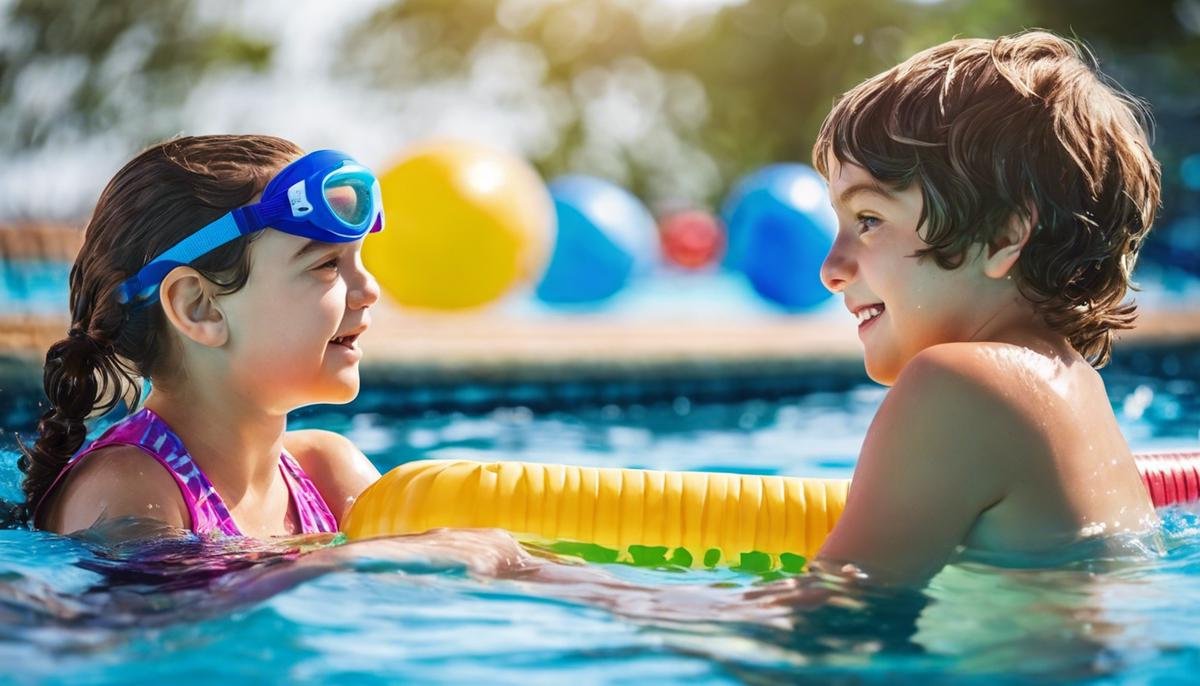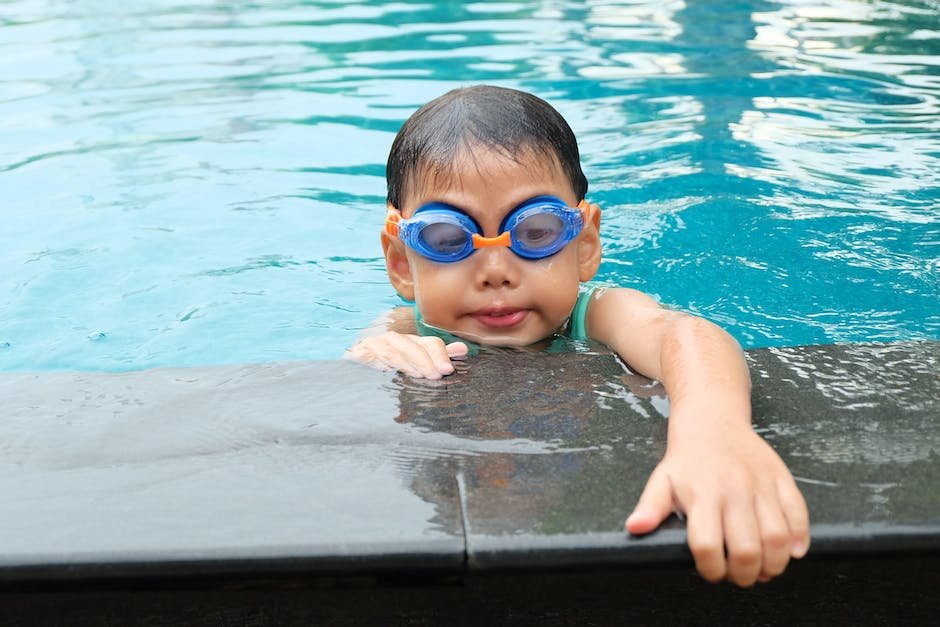
The diagnoses of autism often ushers in a plethora of concerns, with one being their child’s ability to navigate water-based activities safely and comfortably. Understanding the interaction between the autism spectrum and swimming can shed light on why these activities may provoke anxiety in children and even make it a challenging task to perform. Yet, the potential therapeutic benefits of swimming can’t be swept under the rug. This vital consideration has inspired a deeper exploration into effective strategies that can help reduce anxiety in autistic children when introduced to swimming, influenced by resilient success stories and expert advice.
Understanding Autism and Swimming
Understanding the How’s and Why’s: Children with Autism, Swimming, and Anxiety
Swimming is a healthy, enjoyable outdoor activity that is enjoyed by most children. However, some children, particularly those on the Autism Spectrum, may experience heightened anxiety around water and swimming. To better understand and help manage this, it’s essential first to delve into the unique constellation of traits and sensitivities that define autism, and how these may affect a child’s interaction with water.
Children with autism are often uniquely wired to process sensory information differently. Sensory sensitivity is a well-known characteristic of autism, and it significantly influences a child’s interactions with their environment. For these children, experiences we might find normal can appear immensely amplified.
Imagine the feeling of water splashing against the skin, the smell of chlorine, or the echo of voices and the cacophony of activity at a swimming pool. Many children would relish these sensory inputs, but for a child with autism, they might be amplified to the point of overwhelming. Therefore, the thought or prospect of swimming could easily become a trigger for anxiety.
Furthermore, children with autism thrive on routine and predictability. The unpredictability of water – its constantly changing sounds, motions, and even reflections – can create unease for these children. Moreover, the absence of solid ground underfoot when swimming could make them feel insecure or unsteady, spiking anxiety levels.
The issues around swimming safety cannot be ignored either. Children with autism often have difficulty understanding abstract concepts like danger. Concepts that implied risks such as drowning might not be well processed or understood by these children, spiraling up their anxiety.
However, this doesn’t mean that children with autism can or should be excluded from enjoying the pleasures of swimming. On the contrary, swimming can be tremendously beneficial, contributing to both their physical well-being and social skills development.
Adapting the swimming environment to meet these children’s unique needs is key. One very effective technique is social stories – narrating what the child should expect from a swimming session to prepare them mentally. Visual aids might be a great supporting tool in this approach.
Also, providing small exposure to swimming and gradually increasing the duration can help familiarize the child with water, reducing anxiety over time. Customizing the swimming experience can be helpful too, such as adjusting the temperature to suit the child, using noise-cancelling earplugs to dampen the noise, or even dimming the lights at an indoor pool to make the experience less intense.
Swimming instructors trained to understand the unique needs of children with autism can significantly influence their experience, adjusting their teaching style to make learning less stressful and more fun. This method ensures that these wonderful children are included, accommodated, and can fully enjoy the fun of splashing around just like any other kid.
Navigating parenting waters can be tricky, especially for those blessed with children on the autism spectrum. However, armed with understanding and patience, it is entirely possible to turn these hurdles into stepping stones, leading to deeply rewarding experiences for both the child and the family as a whole. Remember, in this journey of parenthood, we are all in the same boat!

Swimming as Therapeutic Intervention
Swimming offers more than just physical exercise; it’s also a fantastic way to help children with autism navigate their sensory challenges in a fun, engaging manner. Let’s delve deeper into the beautiful relationship between swimming and children with autism, and how parents can use it as a therapeutic intervention.
Purely from a physical standpoint, the water provides a safe, cushioned environment for children with autism to build strength and improve coordination. However, a significant part of its therapeutic appeal lies in the immersive, whole-body nature of swimming, which stimulates multiple senses simultaneously. This stimulation helps children manage their sensory overloads and gradually grow comfortable with different sensations, making it an effective form of sensory integration therapy.
The weightlessness children experience while swimming can be inherently calming as well. Imagine being enveloped in a warm, gentle blanket that dulls out too-intense sensations; that’s what water can feel like for children with autism. It’s a space where they can explore and engage without feeling overwhelmed, aiding in stress and anxiety reduction.
Establishing a regular swimming schedule helps teach children with autism about structure and time-management, crucial skills they’ll carry through life. Moreover, they can learn to associate this routine with fun and relaxation, building a positive perception of scheduled activities.
Swimming can sometimes trigger anxiety in children with autism, mainly due to the unfamiliarity of the experience. However, with the right approach and tools, parents can gradually mitigate this fear. Start slow, allow them to familiarize with water at their own pace, use comforting aids like inflatable armbands, and maintain a calm, reassuring presence.
Ensuring safety during swimming sessions is absolutely essential. Investing in floating aids, swimwear with built-in buoyancy, and a trained lifeguard on standby can provide an extra layer of security and peace of mind.
Perhaps one of the most understated benefits of swimming for children with autism is the freedom it gives them to express themselves. Through splashing, floating, or even simply allowing the water to ripple around them, children can explore a new form of expression, fostering their creativity.
Adapting the swimming environment to accommodate the unique needs of kids with autism, a quiet and peaceful space, friendly and patient instructors, gentle water temperature, can play a pivotal role in their swimming experience.
Instructors play a crucial role in assisting children with autism to acclimate to water, gradually instill confidence, and spark a love for swimming. Finding instructors with a background in special needs education or extensive experience working with children with autism can greatly utilize swimming as a therapeutic intervention.
Parenting a child with autism does come with its unique challenges. However, it is important to remember that every small step towards helping your child embrace and navigate their world better is a victory. Sometimes, those victories come from unexpected places, like the gentle, welcoming embrace of a swimming pool.

Strategies To Reduce Swimming Anxiety
Practical Strategies for Reducing Swimming-Related Anxiety in Children with Autism
While many children with autism gain a variety of benefits from swimming such as building physical strength, enhancing motor skills, and experiencing therapeutic calming effects, it is essential to examine and address their potential swimming-related anxieties.
Adopting a Gradual Approach
Parents must use a gradual approach when introducing their autistic child to swimming. It can start with gentle splashing in bathtubs, moving onto paddling pools, before finally leading to bigger swimming pools. This progressive exposure allows the child to become acclimatized to the new sensation that water brings, helping reduce their anxiety levels.
Familiarizing with Swimming Equipment
Floatation devices and goggles can feel strange and intrusive to a child. By allowing the child to hold and play with these objects outside of the water, they can become familiar and less intimidating, thus easing any associated anxiety.
Use of Visual Imagery
Children with autism often respond positively to visual aids. Picture books, social stories, or even videos about swimming can help the child understand what to expect and make the process less overwhelming.
Incorporating the Child’s Interests
Incorporating a child’s favorite toys or activities into the swimming experience can make it more enjoyable. For instance, if a child loves dinosaurs, floatable dinosaur toys could be used during swimming lessons.
Communication is Key
It’s important to maintain an open line of communication with the child. Ask them what they find scary or uncomfortable about the swimming experience and find solutions together. Even small adjustments like the depth of the water or the loudness of the environment can make a big difference to their comfort level.
Using a Reward System
A reward system may be beneficial. Small treats or rewards after each swimming session can incentivize children and help them associate swimming with positive experiences.
The Role of Instructors
Instructors with special needs education or experience can play a pivotal role. They are more likely to understand the challenges faced by children with autism and can draw upon their experience to create effective and comforting swimming sessions.
The Freedom of Expression
Swimming can provide a sense of freedom that children with autism might not experience elsewhere. Encouraging children to express themselves creatively in the water can make the experience fun and less intimidating.
Parenting a child with autism can indeed present unique challenges. But by adopting a patient, gradual approach and proactive techniques, swimming can become an enjoyable, therapeutic intervention. In this journey, each little stride a child makes in the water is not only a victory for them but a rewarding experience for the parent as well. Remember, every stroke counts!

Photo by hajjidirir on Unsplash
Success Stories & Expert Advice
The benefits and challenges of swimming for children with autism
Feeling the thrill of a splash, the buoyant support of the water and the freedom to move in a three-dimensional space – swimming can be a wonderful experience for children. This holds equally true for children with autism, albeit with a few extra considerations. Often, parents wonder how to introduce their child with autism to swimming effectively and safely, as their unique sensory perception and communication needs can create certain challenges. However, with the right approach, swimming can become not just an enjoyable activity but also a beneficial intervention for children with autism.
Understanding a child’s pacing is crucial when introducing them to swimming. A gradual approach can be a game-changer here. Starting with playful water games, then slowly introducing swimming strokes, can allay anxiety and build confidence. It’s also essential to introduce swimming equipment – goggles, swim caps, life vests – gradually, allowing children to get accustomed to the new sensations.
Another angle can be the use of visual aids and imaginary play. Images relating to swimming and water can help a child visualize the activity, understand expected behavior and reduce anxiety. Imaginary play, like pretending to be a fish or a dolphin, can make swimming more relatable and engaging. Similarly, infusing elements connected to a child’s interests can make the whole process much smoother. Are they fascinated by ships? Get them a cute swimsuit with a ship print. Do they love a particular cartoon character who loves water? Invoking their tales can help establish a personal connection and make the process seem less intimidating.
One aspect that can’t be overlooked is communication. Encouraging a child to express how they feel before, during, and after a swimming session is invaluable in making the activity a positive and enjoyable experience. While verbal communication might be challenging, visual aids – like emotion cards or consistent sign language – can be effective tools. Encouraging reciprocal communication can also help alleviate feelings of unpredictability and reduce stress.
A reward system can be a great motivation. Whether it’s their favorite snack post-swim or an additional bedtime story, rewards that immediately follow swimming can reinforce a positive association with the activity. Remember, the rewards need not always be tangible – a smile, praise, or a big hug can be an equally powerful reinforcement!
Last, but not least, beyond just the swim instructor’s role, parents play a critical part too. Don’t underestimate the power of your presence and support to instill confidence. Encourage joint participation in play and swim activities. This keeps boundaries clear, ensures safety, and strengthens the parent-child bond.
Swimming means an improved physical strength, sensory integration, emotional regulation, and a sense of accomplishment. It also provides the child with a creative outlet and endless fun. This leads to small yet significant victories, making the challenging journey of parenting a child with autism a bit easier, and certainly much more rewarding. Every stride your child makes in the water is like a ripple effect, offering endless possibilities for development and reflection. Now that’s joy in every splash!

Bringing together a wealth of real-life experiences and expert advice, the journey of autistic children learning to swim reveals the incredible therapeutic potential of this activity. While the goal is not to eliminate anxiety completely, the focus is to manage and reduce it to a level where swimming can not only be performed safely but also function as an enjoyable and beneficial therapy for children with autism. Ultimately, the key takeaways from these shared insights are to remain patient, maintain a positive atmosphere, and celebrate each small step of progress. Given the right strategies and attitude, any swimming pool becomes a gateway to enormous therapeutic value for children on the autism spectrum.




